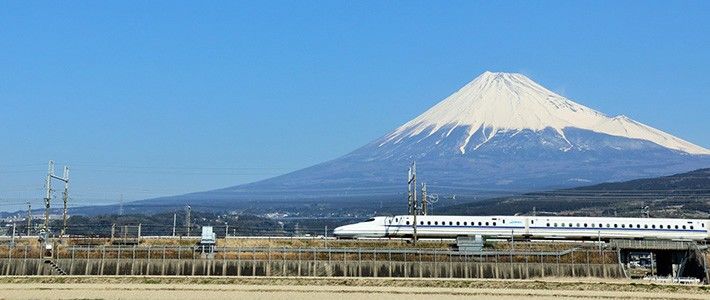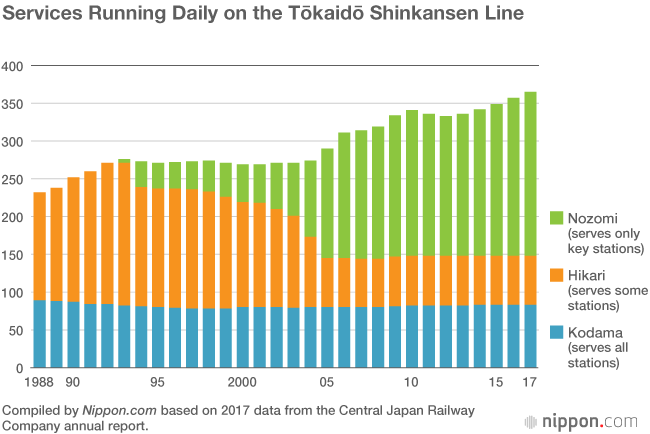
The Tōkaidō Shinkansen’s World-Class Safety, Reliability, and Frequency
Society- English
- 日本語
- 简体字
- 繁體字
- Français
- Español
- العربية
- Русский
The Tōkaidō Shinkansen—a 552.6-kilometer train line that links Tokyo and Shin-Osaka Stations—debuted in 1964, just prior to the Tokyo Olympics. Its trains were the first in the world to achieve a speed of 200 kilometers per hour. Half a century later with the debut of the Nozomi train service, the top speed rose to 285 kilometers per hour. But the Tōkaidō Shinkansen service boasts more than just speed.
According to the 2017 annual report of the Central Japan Railway Company, an average of 365 trains run each day on the line. This means that trains traveling at some of the top speeds in the world are running every three to six minutes, which is the same operational pace as the commuter trains in Tokyo. They carry an average of around 452,000 passengers. Despite the train frequency and passenger volume, the line has not experienced any passenger fatalities from accidents like collisions, derailing, or fire, during its entire history.
In fiscal 2016, around 130,000 services ran on the line, with an average delay per train of just 24 seconds. Considering that there were unavoidable delays during that period due to natural causes, such as earthquakes, heavy rain, and blizzards, this means the normal trains ran on time almost down to the second.

| Safety | 0 fatal accidents since line opened |
|---|---|
| Reliability | Average per-train delay of just 24 seconds |
| Speed | Up to 285 km/h (2 hours 22 minutes between Tokyo and Shin-Osaka) |
| Frequency | Average of 365 services per day |
| Passengers | Around 452,000 each day |
| Peak service | 432 services each day during August Obon holiday |
Compiled by Nippon.com based on 2017 data from the Central Japan Railway Company annual report.
(Translated from Japanese. Banner photo: © Pixta.)